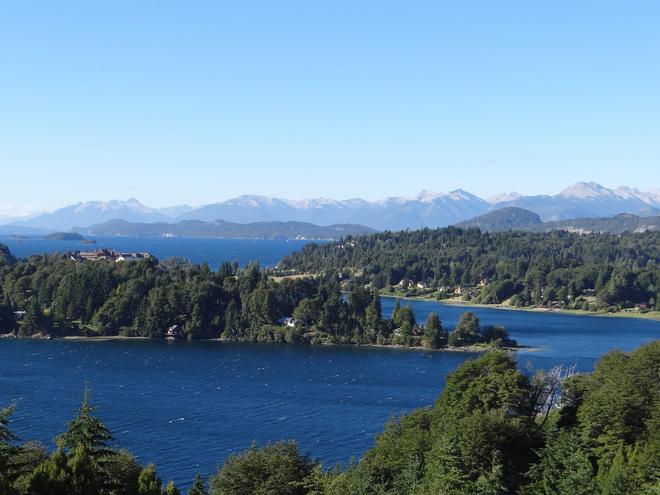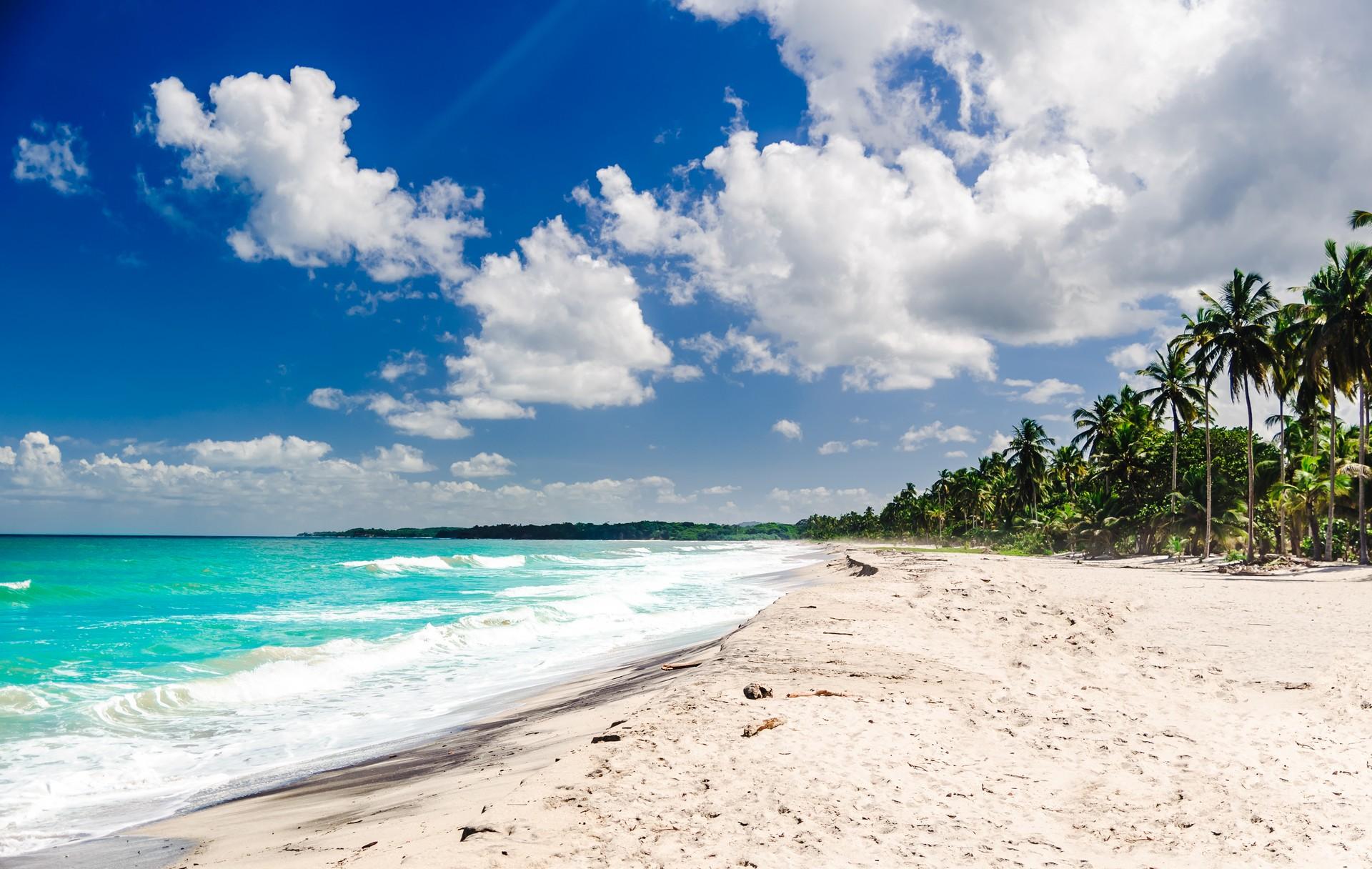
6 destinations in South America where you (probably) won't get wet in February

6 destinations in South America where you (probably) won't get wet in February
In today's article, we take a look at some of the places in South America where you can escape from the cold weather and spend time sunbathing on the beach, enjoying the carnival season, or exploring the local scenery.
Most of South America is (unsurprisingly) in the southern hemisphere, which is why it's warmer in the winter months than in the summer. However, areas in the northern part of the region are located in the equatorial zone, so it is warm all year round, but can sometimes rain quite heavily. In our Sunheron app, we give people tips on places that are both less likely to rain and have some tourist appeal, based on the data we have collected.
If we look at South America from the south, even the local summers are relatively cool in December-March, with temperatures well below 15 °C. However, these areas are not among the most popular for tourism. If we travel further north to Argentina or central Chile, we will experience a typical summer with temperatures around 25 °C and plenty of outdoor activities to try. At the same time, it rains less than in the months of June-September. Even further north, we already start to find ourselves in the tropics, where the February climate can no longer be specified in one sentence. While it tends to rain more in Brazil by the Atlantic ocean, it does not rain at all on the west coast in northern Chile and Peru by the sea. However, this does not apply to the local mountains. Towards the equator, we pass the Amazon rainforest with a climate that does not change much during the year and other Brazilian cities on the coast where the rainy season takes place. The same goes for the Ecuadorian coast, where February is the second rainiest month. Resorts on the northern coast of Colombia and other neighboring countries enjoy sunny and tropical days with minimum clouds.
Rio de Janeiro and surroundings
In February in South America, we cannot begin our journey anywhere else but at the Carnival in Rio de Janeiro. Its tradition dates back to 1723 and has gradually evolved into an event visited by around 2 million tourists a year. Dressed in costume or not, explore the streets of Rio full of samba and fun and join one of the many parties that take place in the streets. Can't dance the samba? Never mind, just have fun. If you get the chance, attend the world's biggest carnival event at the Sambadrome. The dates of the carnival vary depending on the date of Easter, but it usually falls in February.
But Rio and its surroundings are not just a carnival. The beaches here are just as famous. Whether we're talking about the most famous one, Copacabana, or other famous beaches in the city like Vermelha or Aropador. A few hours east of Rio are the resorts of Arraial do Cabo and Búzios with their beautiful beaches and turquoise sea.
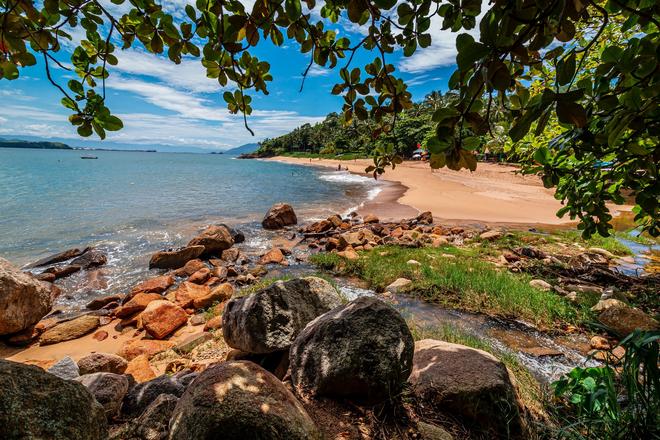
Okay, you like places where it's alive and crowds don't bother you? I'm sure you're wondering what kind of weather you can expect here. Rio is in the southern hemisphere and lies close to the Tropic of Capricorn, so February falls in the summer season. But the temperature differences here throughout the year are not significant. The climate is tropical, the days can be hot (over 30 °C), the nights warm but not necessarily excessive (20-25 °C). February is one of the times when it rains more (it rains approximately every other day), but that certainly won't stop you from enjoying the festival. You will enjoy swimming in the sea, the temperature will be around an ideal 26 °C. In short - ideal conditions, just don't forget your umbrella.
Colombia - Northwest Coast
For our next tip, we head to the opposite side of the continent, to Colombia. The climate here is tropical, and you won't notice that it's "winter" according to the calendar. Specifically, we'll head up the northwest coast to the cities of Cartagena and Santa Marta. Here, beach exploration, snorkelling and scuba diving are the main interests. Nature lovers will also enjoy exploring the Tayrona National Park or the natural attractions inland. These tours can include coffee and cocoa tasting, admiring the remains of vanished civilizations, waterfalls and much more. The city of Cartagena offers architectural highlights such as one of the most extensive fortifications against pirates, and other monuments that have made the city a UNESCO World Heritage Site.
Colombia lies north of the equator, and its northwestern edge, of which we have mentioned, lies by the Caribbean. The climate in this region is stable with temperatures over 30 °C. In February, it hardly ever rains in this part of Colombia (unlike in autumn, for example), so all activities can be enjoyed to the fullest. February in Colombia is the perfect combination of an active holiday with an escape to the sun and beaches.
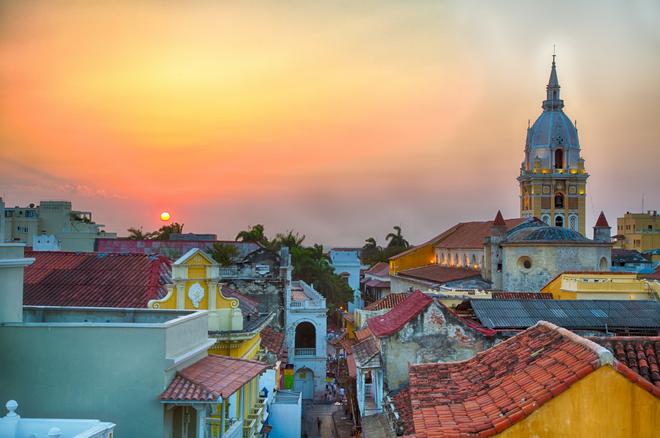
Bonaire
For some, the next tip may be a not so well-known destination, but even these have a place in our review. Bonaire is an island off the northern coast of South America belonging to the Netherlands. It covers less than 300 square kilometres, so you can easily cross it in an hour or two by car or motorbike.
It is a relatively dry and windy island with a permanent tropical climate. There's not much rainfall in February (on average it rains 1-2 days a week), guaranteeing you the best conditions for a relaxing or active holiday.
The beaches of Bonaire are not world famous, but you can recharge your batteries there and with sea temperatures around 26 °C and air temperatures around 30 °C, you'll have almost ideal conditions for swimming. Just watch out for the wind - which brings us to one of Bonaire's favourite activities, windsurfing. Yet the island is even more famous for its great conditions for snorkelling and scuba diving. There is a coral reef just off the island, so there will always be something to admire.
If you've seen pictures of the island, you may have seen one similar to this one.
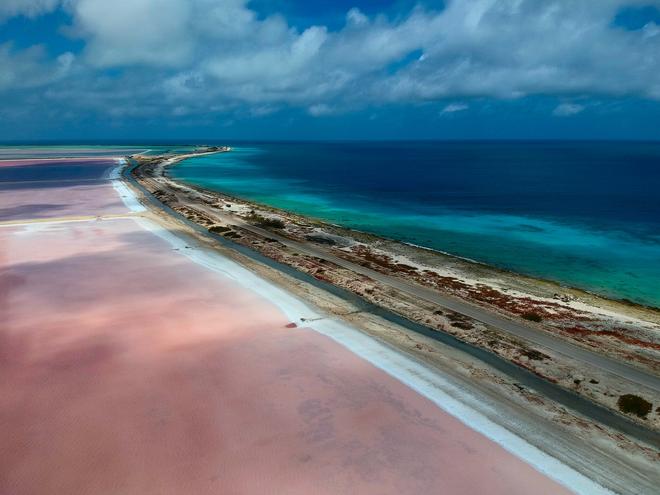
This is a photo of the local salt lagoons, from which salt is extracted, which in some periods creates the pyramids typical for Bonaire. The pink colour is due to bacteria that thrive in such salty conditions.
After enjoying the local sea and seeing the local natural attractions, it will be time to try the local gastronomic specialty "stewed goat meat". All this in the peaceful and perhaps a little sleepy atmosphere of this island.
Uruguay
Our next destination is one that is not a typical beach destination, but in February you can enjoy nice weather by the sea and take a dip. We're talking about Uruguay, a smaller state south of Brazil. In February, you'll find the perfect combination of beach life, culinary experiences, architecture and of course... the carnival.
The Uruguay Carnival in the capital city of Montevideo is considered to be one of the longest lasting in the world, with events lasting more than 40 days a year. It's not as wild as the Brazilian one, but it places more emphasis on authenticity and family atmosphere. But don't worry, dancing and parties are part of it, too. While you're here, stroll also along the local waterfront - the Rambla, visit one of the local markets and admire the architecture in Ciudad Viejo - the Old Town.
There are several famous beach destinations around Montevideo. The first of these is Punta del Este, a place where the high society of Latin America and beyond hang out. Explore the local boulevards and relax on one of the beaches (Playa Monsa, Playa Brava). Staying there in February can be more expensive than in the rest of Uruguay due to the resort's reputation and high season. A similar resort, though not as famous, is Piriápolis, which is just outside Punta del Este.
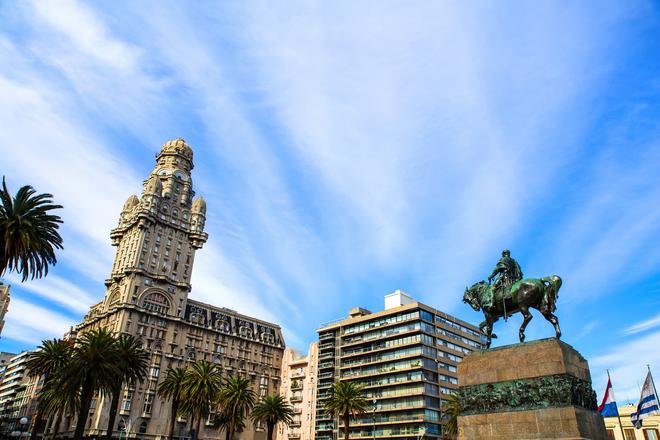
One of the things Uruguay is famous for is its steaks. Uruguay is the country with the highest consumption of beef. The ecological side of things aside, a visit to a steakhouse should definitely not be missing from your itinerary.
Uruguay is a country with a stable subtropical climate, the rainfall is evenly distributed and in the local summer (December-March) you can enjoy a beach holiday, when the sea temperature averages 23°C and temperatures range between 18 degrees at night and 26 degrees during the day.
Chile
Often on our website, one of the main criteria for choosing a destination is that it doesn't rain too much during your stay. But now let's go to an area where it almost never rains. Northern Chile, the Atacama Desert and the Chilean coast between Arica and Iquique.
Arica is a town on the Chilean border with Peru. It is famous for its beaches, which are especially famous among surfers. But it also serves as a base for day trips to the surrounding mountains, where you can admire, for example, Lake Chungará, thermal springs and the desert landscape in general. Iquique is popular with surfers, but it is also a renowned resort with a lively nightlife. At Cavancha Beach, you can enjoy the sea to the fullest and head out for entertainment in the evening. San Pedro de Atacama is a town near the border with Bolivia in the Andes situated by an oasis in the Atacama Desert. Visitors' main destinations tend to be hikes to see the local distinctive desert landscape, hiking in the mountains and rock climbing, among others.
This region of Chile is almost rain-free due to the Earth's rotation and its location on the west coast of South America. Temperatures in December will be around 25 °C by the sea, but less so in the mountains, where it can be very cold at night due to the desert nature of the landscape.
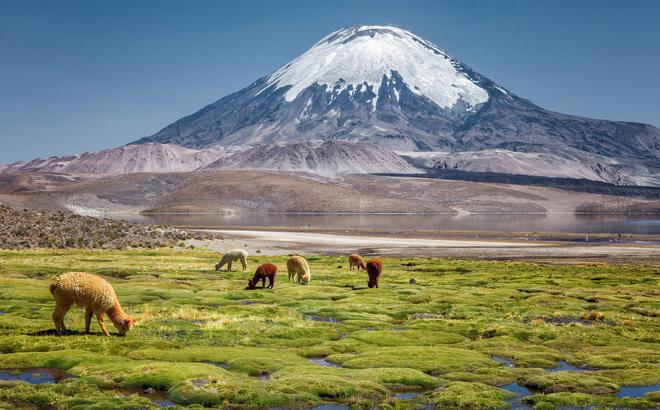
Southern Argentina
Finally, another of our secret tips. This time we travel to the interior of Argentina, namely Patagonia, specifically near the town of San Carlos de Bariloche. This is a town surrounded by mountains, lakes and forests. Those who are looking for an active holiday will find it particularly interesting. The range of activities on offer here is very wide - short and multi-day hikes, rafting, horse riding, kayaking, and in winter (in this case June-August) also skiing. The architecture of the town, which is often likened to the Alpine style, is also worth mentioning, so it is definitely worth not missing a visit to the town itself.
February is pleasant in Bariloche. Temperatures climb above 20 °C during the day and are around 10 °C at night, with hardly any rain. Ideal weather for outdoor activities.
In the evening, you can take shelter from the cooler weather in one of the local bars or restaurants. There's a great selection of local beers on tap, and for meats, try the lamb typical of the area. Thanks to the Alpine influence, chocolate is also very popular in the area.
We hope you've made the most of our tips, and whether you're off to catch some sun or spend your holiday in a more active way, you'll enjoy your stay in one of these South American destinations.
